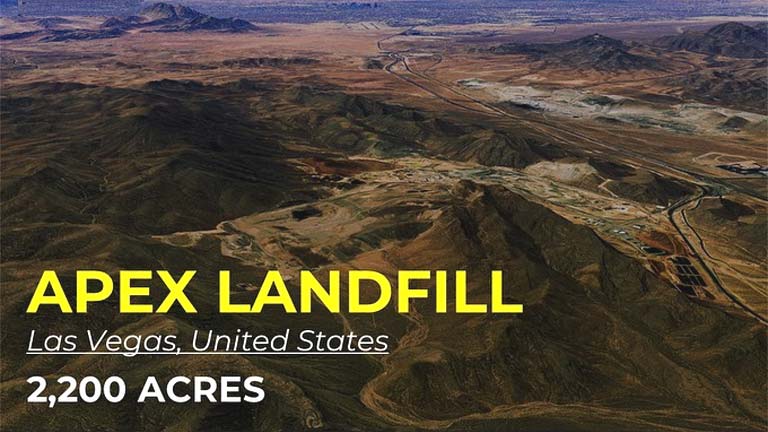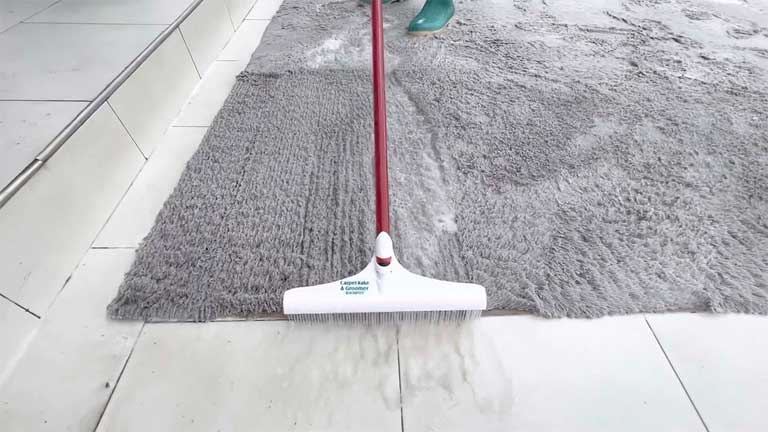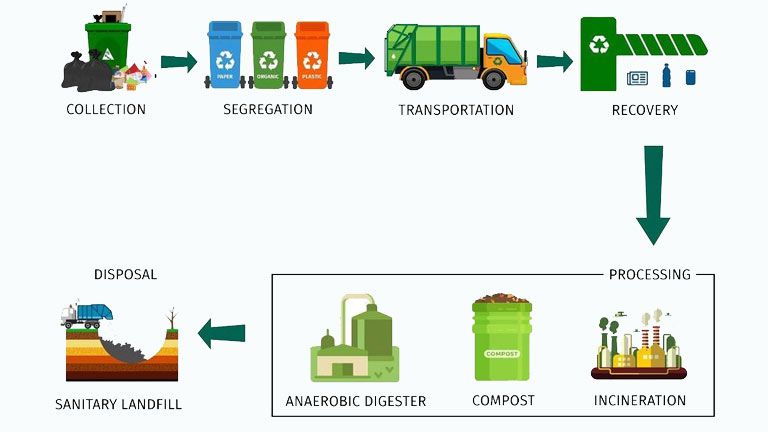
As the world population and economy increased, humans started producing more waste, disposal, and garbage. The developed countries people are producing more waste than ever before. As a result, the bigger and taller garbage mountains around our cities are increasing day by day. The solid waste management trucks pick up the garbage from people’s homes and dump it in the dumping ground. There are very few things in those dumpers, bins, and trash trailers that could be recycled, otherwise, all go in the dump.
The World’s Biggest and Tallest Garbage Dumping Mountains
Apex Regional Landfill, Las Vegas, USA (Biggest)
Located in Las Vegas, Nevada, the Apex Regional Landfill is one of the largest waste disposal sites in the world. Covering an astonishing 2,200 acres of land, it has been in operation since the early 1990s. This landfill receives around 5,000 tons of garbage every day, making it a symbol of the United States’ substantial waste generation. The trash here is piled high, creating a mountainous landscape that reaches nearly 400 feet in height. The Apex Regional Landfill serves as a stark reminder of the urgent need to reduce, reuse, and recycle.
Ebisu-yama, Tokyo, Japan (Tallest)
In the densely populated city of Tokyo, space is at a premium. This has led to the creation of vertical landfills, with Ebisu-yama being the most prominent example. Located in Shibuya, one of Tokyo’s busiest wards, Ebisu-yama rises to a towering height of approximately 289 feet, making it the tallest garbage dumping mountain in the world. Its construction began in the 1970s, and it continues to accept waste from the surrounding metropolitan area. The vertical design of this landfill helps maximize the use of limited land space, but it also presents unique challenges in terms of odor control and environmental impact.
Bordo Poniente, Mexico City, Mexico (Biggest)
Mexico City, one of the world’s most populous cities, has long struggled with waste management. The Bordo Poniente landfill was once the largest in Latin America, covering over 927 acres. It operated for more than three decades, receiving up to 12,000 tons of waste daily. The height of this garbage mountain reached approximately 165 feet. However, due to environmental concerns and the depletion of available space, the landfill was closed in 2011. This closure prompted the city to rethink its waste management strategies and explore alternative solutions.
Mount Rumpke, Cincinnati, USA (Tallest)
Mount Rumpke, located near Cincinnati, Ohio, stands as one of the tallest garbage dumping mountains in the United States. This massive landfill, operated by the Rumpke Waste & Recycling company, has been in use for decades and reaches heights of up to 1040 feet above sea level, although its actual height above the surrounding terrain is lower. The impressive elevation of Mount Rumpke is a result of decades of waste accumulation in a region where land is relatively flat. While the landfill is designed with environmental safeguards, such as liners and gas collection systems, its towering presence is a stark reminder of our disposal habits.
Laogang Shanghai, China
The Laogang dumping ground in Shanghai, China, is one of the largest in the world, covering an area of over 100 hectares. It receives over 8,000 tonnes of waste per day, including household waste, construction waste, and industrial waste. The dumping ground is a major environmental hazard, posing serious risks to the health of people living nearby. The rotting garbage emits methane gas and a greenhouse gas.
Deonar dumping ground, India
The Deonar dumping ground, India’s largest and oldest, receives over 5,500 tonnes of waste daily. This poses serious environmental and health risks to nearby residents, including exposure to methane gas, leachate, and respiratory problems. The Brihanmumbai Municipal Corporation has taken some steps to address the issue, but more needs to be done.
Dumping grounds are necessary but we often overlook part of the waste management system. WM waste management services and other solid waste management companies also look and collect what is reusable, recyclable, and other materials that cannot be otherwise safely disposed of.




